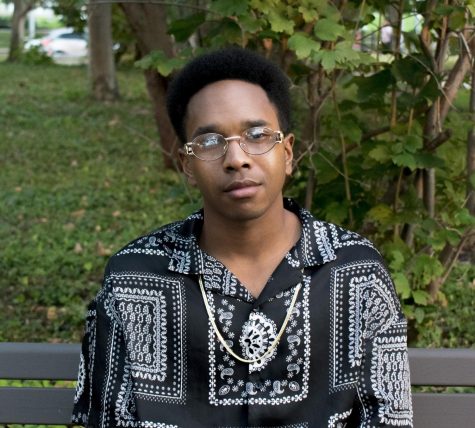Smith: The epic legacy of LeBron James & the Cleveland Cavaliers
Not many real life stories get fairy tale endings, but the Cleveland Cavaliers have made the exception. This summer, we witnessed them lift a 52-year old curse from a city plagued by a series of misfortunate events like the The Drive and The Shot. The prodigal son himself, LeBron James, brought his hometown back to the big stage, the NBA Finals, in a series that completely changed the mood of the city.
Despite experts and sports analysts choosing the record-holding Golden State Warriors to bring home the Larry O’Brien Trophy, Clevelanders radiated confidence in their team. They packed Quicken Loans Arena, the Q, for each playoff game, filling the stadium with Cavaliers colors: wine, gold and navy blue. Their loudness and rowdiness gave the Q an energy that cannot be matched, even when the home team was playing over 2,000 miles away.
Despite the support, the Cleveland Cavaliers fell into the NBA’s bottomless pit: a 3-1 deficit in the NBA Finals. One that no team has ever managed to climb out of.
Until James and company had other ideas.
The Cavaliers would win the next three games, rallying back from behind and snapping the infamous Cleveland Curse in route to winning the franchise’s first ring.
I was in disbelief. Upon James’ departure for Miami in 2010, I saw another 40 or so years of professional sports purgatory on the horizon. At the time, the despair was palpable and filled the entire city. The Cavaliers set the record for most losses in a row, 24, during the 2010-2011 season, their first season without James in eight years.
Suddenly, that losing streak no longer mattered. The Decision no longer stung. All of the painful moments in Cleveland sports history were forgotten. All the shortcomings were forgiven. The dream had finally become reality for Clevelanders, many of whom have never seen a championship brought home from any team. Downtown erupted. All of Northeast Ohio celebrated.
It’s one of those things you have to be a Clevelander to truly understand. It had to be James. He was the chosen one. It had to be another Northeast Ohioan, someone who has first-hand experience with the anguish in Cleveland sports. Someone who has experienced life in a rustbelt city in a post-manufacturing economy. Someone who had enough, but someone with the talent to do something. It had to be one of us to break the curse.
But why?
The Cleveland Curse came to symbolize not only the sports struggle in Cleveland, but the struggle of everyday life in the city. You see people always go, but never come. You see things that you enjoyed as a kid, malls and amusement parks, turn into empty lots. Take a drive through the Cultural Gardens on East Boulevard. If you look on the west side, you’ll see the rich history of Cleveland told through busts dedicated to diversity. If you look on the east, you’ll see abandoned houses, unmaintained roads and the harsh realities that many residents face today.
This championship won’t solve issues within neighborhoods. It won’t solve police brutality. It won’t solve the segregation, joblessness, poverty and other issues that Cleveland faces, but it provides hope. Something many Clevelanders haven’t had in awhile. That’s all it needs to do.
Believeland, an ESPN documentary, highlighted the empty trophy cabinets and blown opportunities that have haunted Cleveland sports fans since Lyndon B. Johnson resided in the oval office. No longer. After the Cavaliers’ triumph, they have edited the film to include the championship parade, one that saw millions of people pour into downtown Cleveland to catch a glimpse of their champions. Your champions. Our champions.
“Cleveland,” said an exuberant James, panting after the game seven win, “This is for you.”

KJ is a fourth-year Pre-Law student and sociology major who also minors in psychology and English. He is a Cleveland native, a member of the Emerging Scholars...

